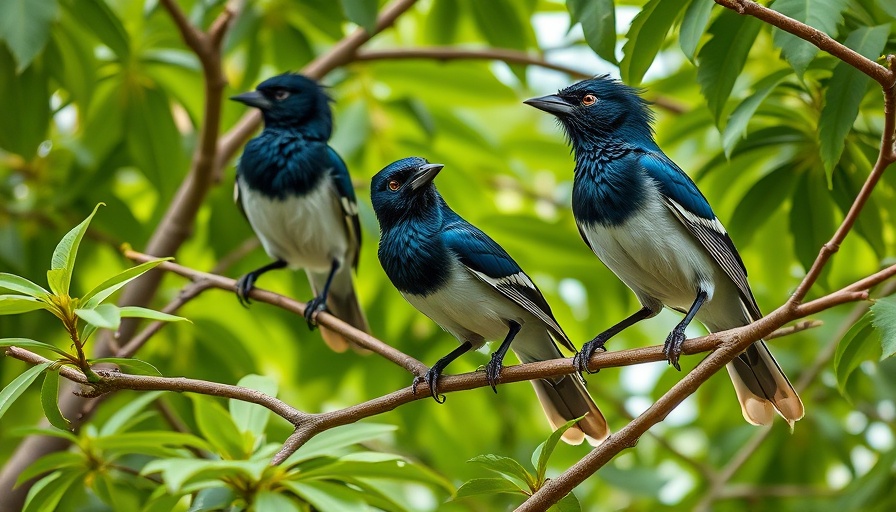
The Enigmatic Leadership of the White-throated Magpie-jay
The captivating White-throated Magpie-jay, known for its striking blue and white hue, exhibits a complex social structure where female dominance is prominent. These birds are often seen coordinating in family groups, which is a fascinating illustration of cooperative breeding practices.
Unpacking Cooperative Breeding Dynamics
In these family-oriented groups, the dominant female leads, flanked by her mate and several female offspring. This setup allows the female to focus on nurturing her young while the others assist in gathering food, showcasing an intriguing example of altruism in the avian world. Such arrangements are not only beneficial for nurturing the chicks but also play a role in strengthening family bonds.
A Meticulous Approach to Parenting
The Magpie-jay's nesting behavior reveals the extent of its care for offspring. They often build suitable nests high in trees, with females laying 3 to 4 eggs per season. The entire community monitors the environment for threats, ensuring a relatively safe upbringing for the youngsters. Interestingly, this species has been noted to change nests frequently until they succeed in hatching, showing their persistence in ensuring the next generation survives.
The Communication Strategy: A Unique Vocalization System
One cannot discuss the White-throated Magpie-jay without mentioning its impressive vocal abilities. Males boast a repertoire of over 60 distinct calls, which they use to communicate within their groups and warn against predators. This extensive vocalization is a crucial survival tool, allowing them to convey different messages effectively. Additionally, this communication style helps maintain the structure of their social groups, further underlining the importance of auditory skills in their daily lives.
Extending Beyond Central America: Global Perspectives
Although predominantly found in Central America, the White-throated Magpie-jay is part of a larger family of approximately 50 magpie species worldwide, each exhibiting unique social structures and behaviors. This diversity serves as a reminder of the complex interrelationships present within avian communities around the globe, thus inviting comparisons with other species and cultures.
Concluding Thoughts on the White-throated Magpie-jay
The White-throated Magpie-jay stands out as a beacon of collaborative behavior and social complexity. Understanding these birds not only enriches our appreciation of their ecological roles but also inspires us to think about our societal structures and familial ties. In promoting awareness about avian life, such as the Magpie-jay, we contribute to the protection and preservation of these extraordinary creatures.
 Add Row
Add Row  Add
Add 




Write A Comment